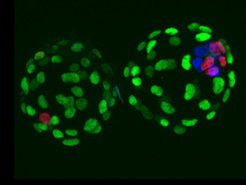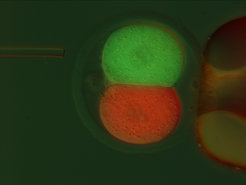Identical – and yet not indistinguishable
Team of scientists from Münster discovers important principle to examine different culture media for in vitro fertilisation
Reproduction medicine is a booming business; the number of fertility treatments is continuously growing – firstly, because couples postpone their decision in favour of children, but also because taboos on assisted reproduction are breaking. To further improve assisted reproduction, basic research in animal models is indispensible. A team of scientists from the Max Planck Institute for Molecular Biomedicine and the Centre of Reproductive Medicine and Andrology of the University of Münster has now discovered in early mouse embryos that the first two cells, which arise after the first cleavage of the fertilised egg, are not equal in most cases. These differences question the scope of totipotency and offer the opportunity to investigate how culture media that are used in fertility clinics influence embryo development.

Blastocyst stage of mouse embryos: in 70 percent of the twin paris, the single cells develop to blastocysts with varying success. This also affects the later development. (Red-stained cells will build the future embryo, green- and blue-stained cells will become extraembryonic tissue, such as the placenta).

After the fertilised egg's first cell division, the two cells are injected with a red- and green-fluorescent marker, respectively. With this staining, the scientists can track as to which tissue type the cells will develop.

